For all the problems with the cooling systems on various BMW models, they actually have a rather simple and elegant solution to the common air-in-your-cooling-system issue. Most BMW models have a bleed screw somewhere on the uppermost part of the cooling system. Even though this is a rather ingenious design, it seems that many people have trouble understanding it.
This isn’t to say, of course, that BMW cooling systems tend to be good, overall, with regard to durability and reliability. They’re not. They’re quite terrible, actually. It’s the unreliable nature of the BMW cooling system that forced me to become so well acquainted with the bleed procedure. But that’s beside the point.
If you’ve done cooling system work on your BMW, you will have to add new coolant. When you add new coolant, you have to bleed the system at the same time. This is that procedure. I hope I haven’t failed in making it as simple as possible.
The parts quantities are up to you to figure out for your specific application. If you’re doing this on an E46–the BMW pictured here–and filling from empty, you will need just over a gallon of coolant and a gallon of distilled water. Because these generally come in gallon bottles, you will need to buy two gallons of each.
This procedure only applies to older BMW models with mechanical water pumps. Electric water pump cars, apparently, require a different procedure.
Some notes.
If, at any point in time, the coolant gauge needle goes past the middle, SHUT THE ENGINE OFF IMMEDIATELY. This is a basic bit of advice for you to remember all the time. It’s even more important right after you’ve attempted to bleed the system, when there’s a real possibility of error that might’ve introduced an air pocket into the system. An air pocket will, sometimes, stop the coolant from flowing through the engine, thus overheating it. This is, of course, quite bad. When these all-aluminum engines overheat, they tend to warp, necessitating replacement of the head gasket and machining of the head. This process is so expensive that many just opt for a used engine.
Distilled water. It’s used because it has no mineral content. If you put tap water in your engine, you add minerals into the system. These minerals tend to bind with the metal surfaces, inhibiting heat exchange and–in the case of a high mileage engine that’s been run with high mineral content water for most of its life–could actually clog a passage.
Parts •
• BMW Approved coolant (Genuine BMW coolant, Zerex G48, Pentofrost NF, etc.)
• Distilled water (And an empty distilled water bottle for mixing the coolant)
• Good, German Philips head screwdriver
• Large bucket or drain pan to collect coolant (cat litter buckets are good for this)
• Nitrile gloves (optional)
THE ENGINE IS OFF UNTIL THE END. THE BLEEDING IS DONE WITH THE ENGINE OFF.
Step 1 •
Make a 50/50 mix of distilled water and coolant. To do this, pour 2 quarts of straight coolant into your empty 1 gallon bottle.
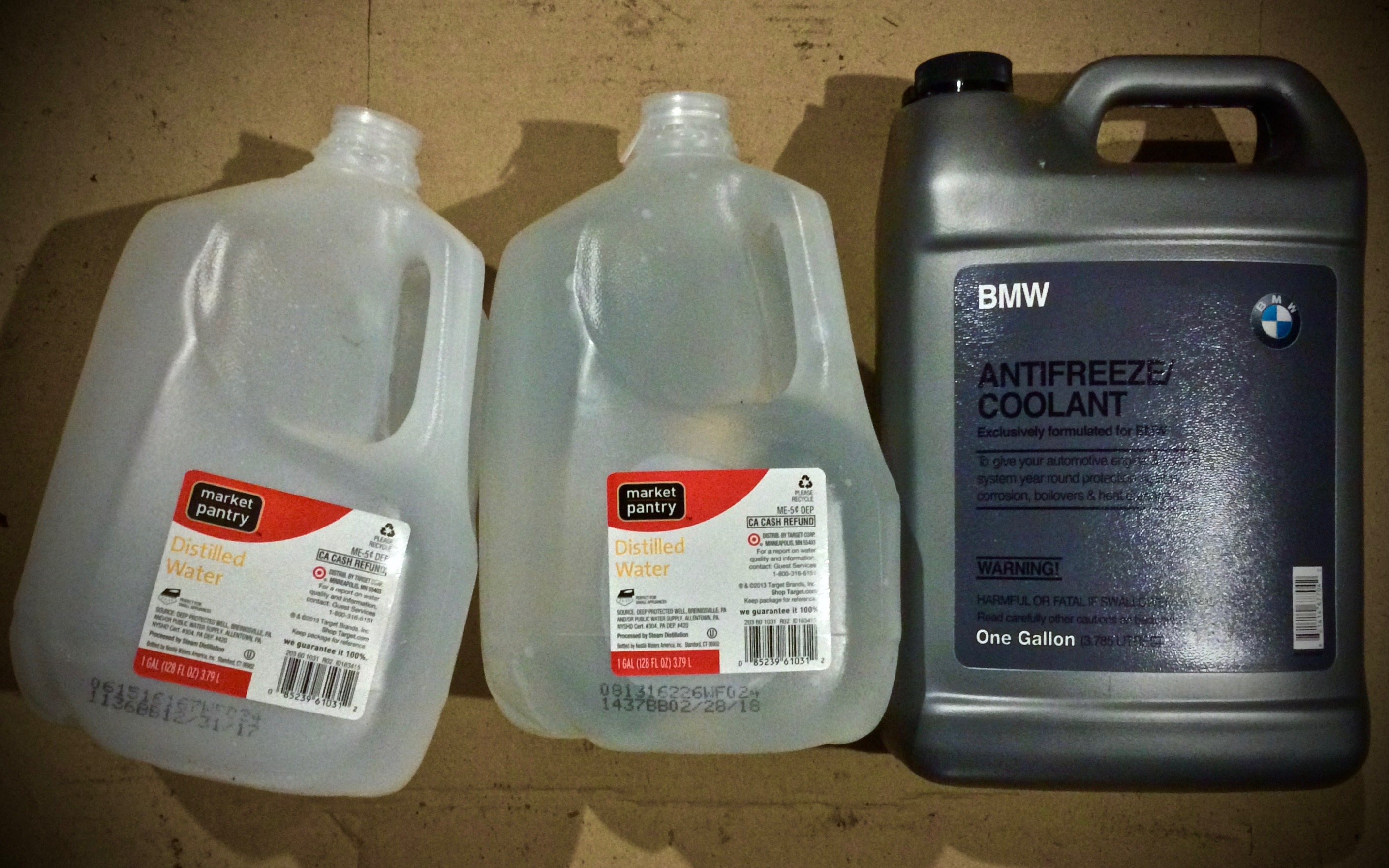

Fill the bottle the rest of the way with distilled water, then shake it to mix the coolant and water.
Step 2 •
(No picture.)
Begin by putting the front of your car up on ramps. Or, you can jack the front up and put jack stands under the front jack pads. You want the front of the car tilted up so that any air in the system is forced toward the highest part of the system–the bleeding port.
Step 3 •
Turn the key to on WITHOUT STARTING THE ENGINE. Turn the climate control temp up, as high as it will go–91f on US cars–with the fan on low.
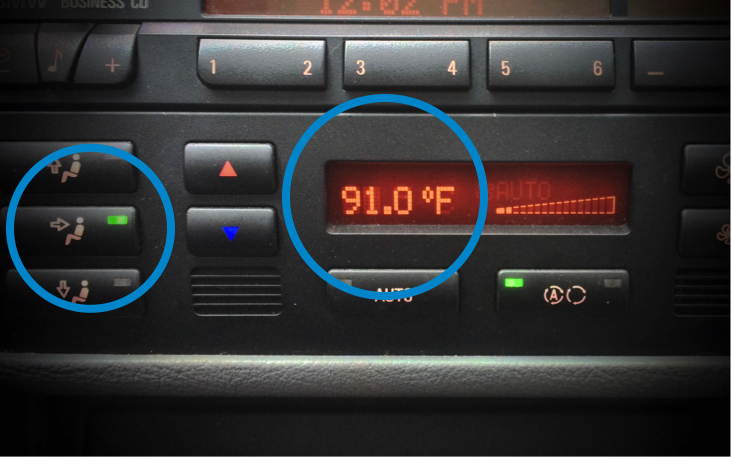
Turn the center vent dial to full hot.
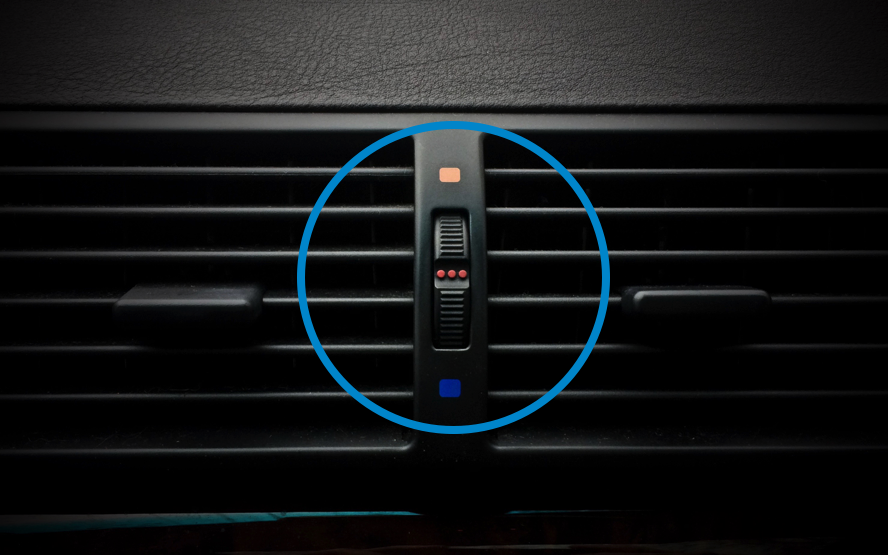
Step 4 •
Remove the expansion tank cap and, using your philips head screwdriver, remove the bleeder screw.
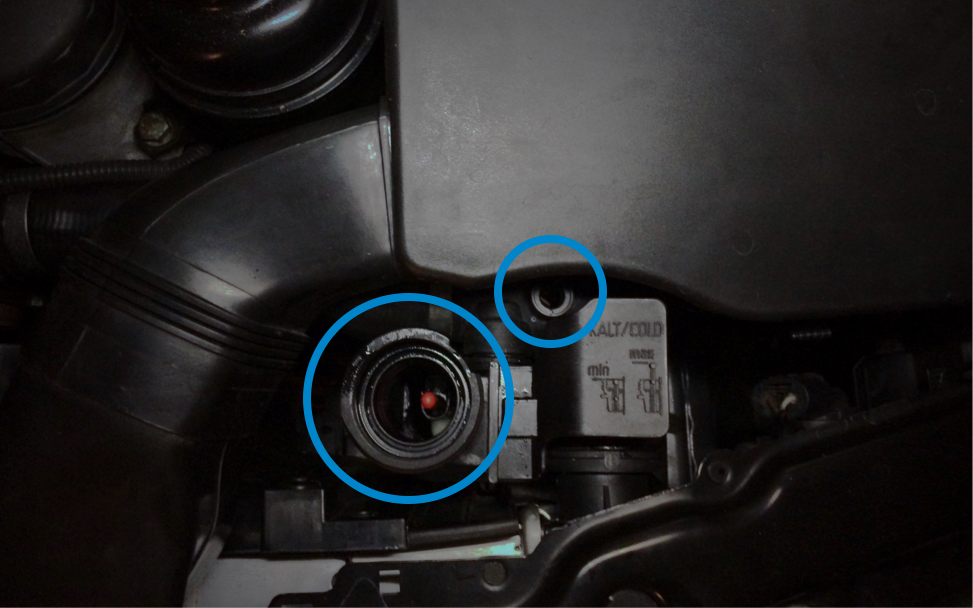
Step 5 •
Place your bucket/drain pan/container under the expansion tank area. (I’m assuming your belly pans are already off the car, due to whatever work you did to prompt you to bleed the system.) You may need to move your container around to position it under the somewhat random stream of coolant that will splash out from under the car.
Slowly add your 50/50 coolant mixture. The amount you add will be contingent upon the amount you drained. Keep adding the coolant until it flows from the bleeder port, without bubbles, for at least 15 seconds. Bubbles will sometimes pop up every few seconds, even if it seems like you’re done. If you make sure to pour in the coolant slowly, you will encounter fewer bubbles.
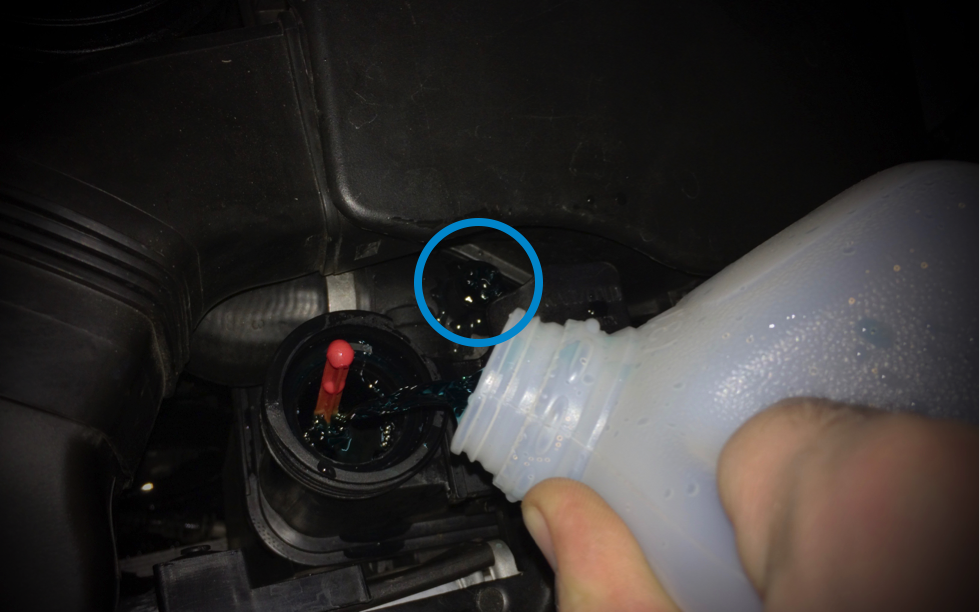
If you feel confident that there are no more bubbles coming from the bleeder port, and all air has been evacuated from the system, go to the next step.
Step 6 •
Reinstall the bleeder screw, then the expansion tank cap.
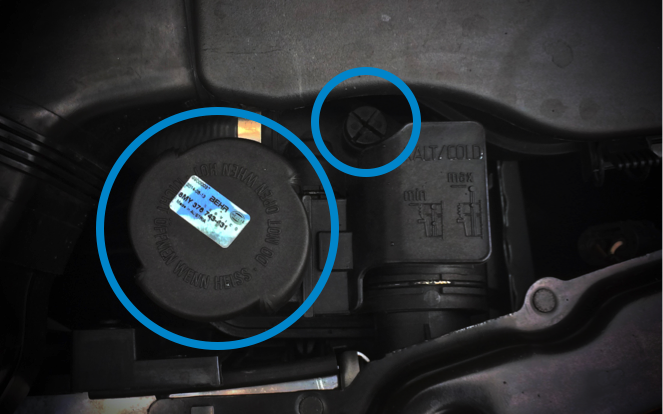
Step 7 •
Now you can start the engine. Turn the fan up a bit, but keep the heat all the way up. Make sure the center vents are on. Sit in the car and watch the coolant temp gauge as the car warms up. Depending on the ambient temperature, and the temperature of the coolant you added, the needle should be in the middle from 5 minutes–summer–to 15 minutes–winter. Once the needle is near the middle, you should be getting hot air from the vents. Keep watching the gauge for a few more minutes–you can rev the engine if you like–to make sure the needle doesn’t go past the middle. If you’re confident that the needle is staying in the middle, you can go for a short–5 minutes–test drive.
Step 8 •
Did the needle stay in the middle? Still getting heat from the vents? You’re finished!
Check your expansion tank level in the morning, when the engine is cold, over the next few days, to make sure you’re not losing coolant. Also try to keep your eye on the temp gauge over the next week to verify that the needle still isn’t going past the middle.
What if it didn’t work?
There are many reasons for the car to overheat or behave as though the bleeding procedure didn’t work. Your water pump could be bad, which would cause the car to overheat regardless of bleeding. The heater core could be clogged if you, or someone else, used a “stop leak” product on the cooling system at some point. Your fan could be bad, again, causing the car to overheat regardless of any other factors.
If you know that the cooling system is good, and there isn’t anything else that could be wrong, and the car is still overheating, then you performed the procedure incorrectly and have to start over from the beginning.
Consider throwing some satoshis my way: 3L74fDSVd1YDzyp18p9VJPPa6Kdw47xVKk

Superb run-through mate, great detail and simple explenations.
LikeLike